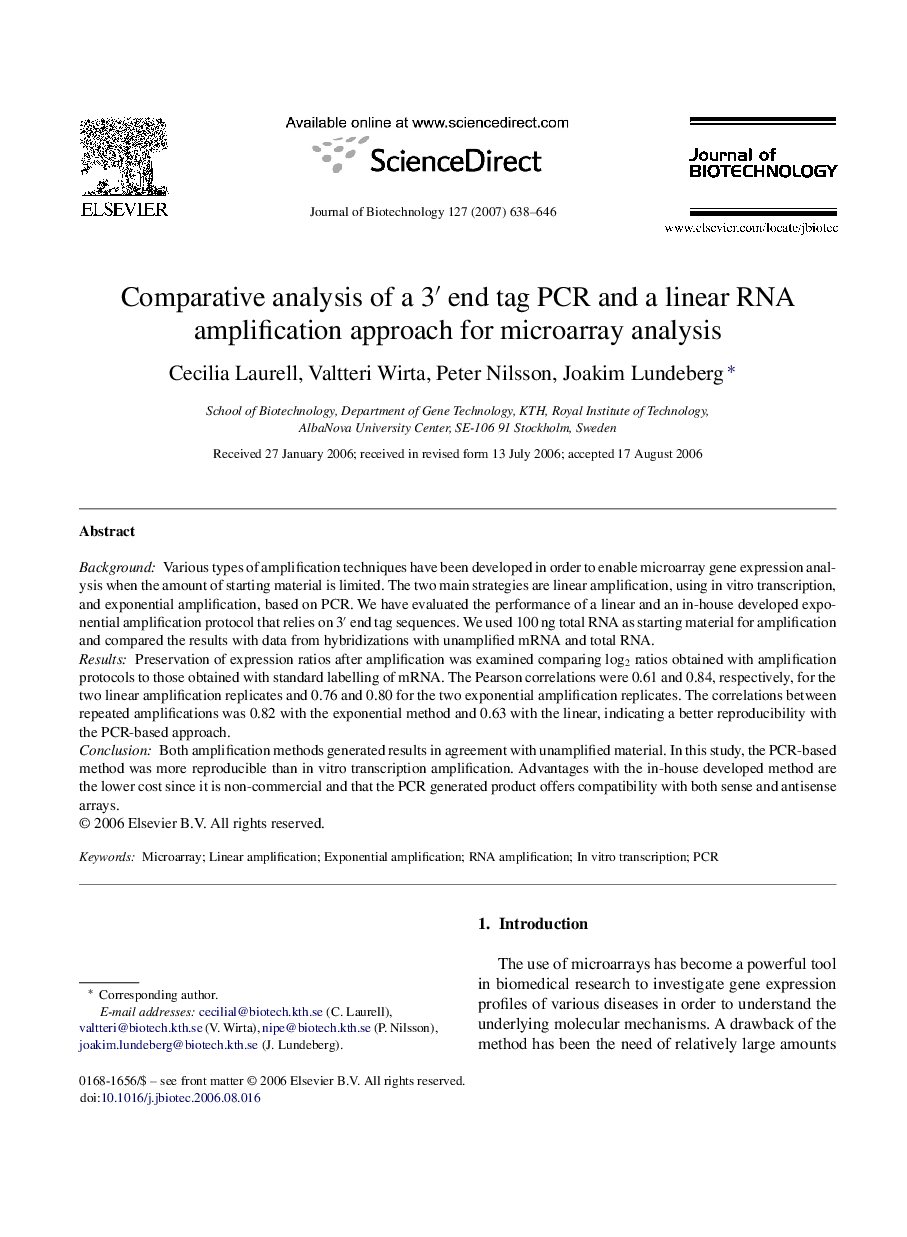| Article ID | Journal | Published Year | Pages | File Type |
|---|---|---|---|---|
| 25513 | Journal of Biotechnology | 2007 | 9 Pages |
BackgroundVarious types of amplification techniques have been developed in order to enable microarray gene expression analysis when the amount of starting material is limited. The two main strategies are linear amplification, using in vitro transcription, and exponential amplification, based on PCR. We have evaluated the performance of a linear and an in-house developed exponential amplification protocol that relies on 3′ end tag sequences. We used 100 ng total RNA as starting material for amplification and compared the results with data from hybridizations with unamplified mRNA and total RNA.ResultsPreservation of expression ratios after amplification was examined comparing log2 ratios obtained with amplification protocols to those obtained with standard labelling of mRNA. The Pearson correlations were 0.61 and 0.84, respectively, for the two linear amplification replicates and 0.76 and 0.80 for the two exponential amplification replicates. The correlations between repeated amplifications was 0.82 with the exponential method and 0.63 with the linear, indicating a better reproducibility with the PCR-based approach.ConclusionBoth amplification methods generated results in agreement with unamplified material. In this study, the PCR-based method was more reproducible than in vitro transcription amplification. Advantages with the in-house developed method are the lower cost since it is non-commercial and that the PCR generated product offers compatibility with both sense and antisense arrays.
